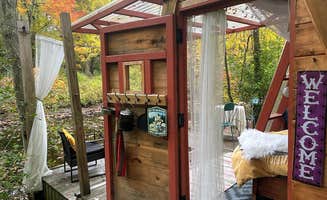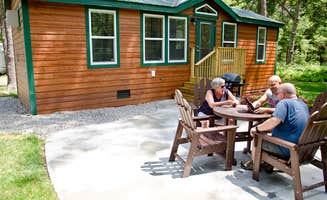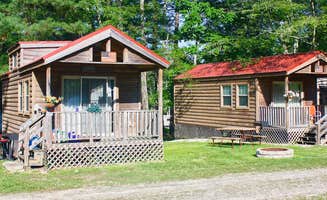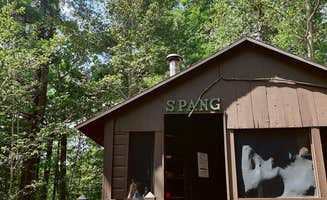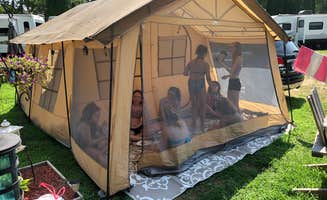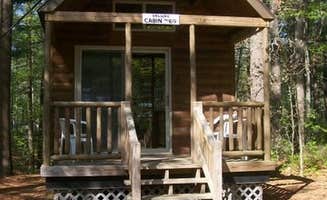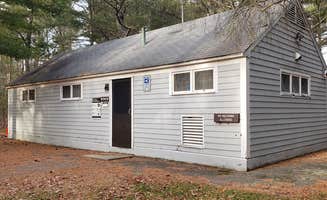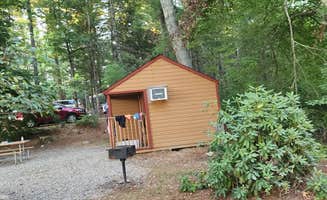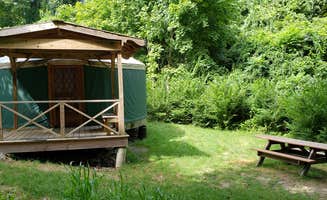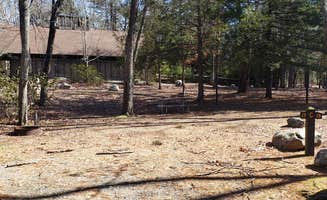Cabin rentals near North Seekonk, Massachusetts cluster along the eastern Massachusetts and Rhode Island border within deciduous forest terrain that remains lush from late April through October. Winter temperatures typically drop below freezing, while summer highs average in the 80s Fahrenheit with moderate humidity. Most cabins sit on established campgrounds within 25 miles of North Seekonk, providing access to both woodland recreation and coastal attractions.
What to do
Hiking and wildlife viewing: George Washington State Campground offers multiple trail options surrounding the pond area. "There are great hiking trails going around some lakes," notes a visitor. The campground maintains both short family-friendly paths and more rugged terrain for experienced hikers.
Fishing opportunities: Multiple campgrounds feature ponds stocked with local fish species. At Pinewood Lodge Campground, cabin guests appreciate the water access. "There was great views from our site of the pond. On the site there was also a path down to a little dock on the pond that you could sit and relax on," one camper explains. Morning and evening typically offer the best fishing conditions.
Swimming access: During summer months, cabin guests can utilize designated swimming areas. The pond at George Washington State Campground receives positive reviews for families. "There is a nice beach for children. The water was warm and clean. You can kayak or canoe. The dogs cannot go on the beach, but they can go in the boats," a visitor shares about their experience.
Sports and recreation: Many cabin campgrounds maintain sports facilities for guest use. "They have a ball park in this RV resort. Much of the roads are paved," a camper reports about recreational options beyond standard camping activities.
What campers like
Privacy levels: The level of seclusion varies significantly between cabin properties. Ponkapoag Camp offers a more isolated experience compared to larger establishments. "Minutes from Boston, feels Miles away. Love the cabins! Spending Friday & Saturday in one of the cabins (w/woodstove) is deal for a winter weekend adventure!" explains one cabin camper.
Clean facilities: Maintenance standards receive frequent mentions in reviews. "Bathrooms are best of any campground. Highly recommend," writes a visitor to one of the larger resorts, while others appreciate "very clean bathrooms with hot showers."
Proximity to attractions: Cabin locations provide convenient access to regional points of interest. Boston/Cape Cod KOA receives positive feedback for its strategic position. "We wanted to explore the Cape and are members of the KOA rewards program so we chose here to stay. The staff were very nice and helpful," a visitor mentions about using the campground as a base for regional exploration.
Seasonal events: Many campgrounds organize themed weekends and holiday celebrations. "We stayed here for a few nights when they celebrated Halloween 🎃. It is super easy to get around. They had tons of festive activities," shares one visitor about their autumn experience.
What you should know
Cabin quality variation: Basic cabins typically feature minimal amenities like beds and electricity, while premium options include kitchenettes and private bathrooms. One visitor to Stateline Campresort & Cabins notes their recent experience: "The sites are very well set up. You have your pick of shady sites or sites with no trees."
Reservation timing: Peak season cabin bookings often require 3-6 months advance planning. Holiday weekends fill especially quickly at popular locations. Most campgrounds open reservations in January for the upcoming season.
Winter availability: Most cabin properties near North Seekonk operate seasonally. Holiday Acres Campground remains one of the few offering year-round accommodations, while Ponkapoag Camp allows winter stays in their wood-stove heated cabins.
Fee structures: Cabin rental costs typically include base rates plus additional charges for extra guests, pets, and certain amenities. Some properties charge cleaning deposits, while others build this into the nightly rate.
Tips for camping with families
Choosing the right property: Family-friendly amenities vary widely between campgrounds. Canoe River Campground receives positive feedback from returning families. "I went to this campground every summer as a kid 25 years ago with my family. This was my first summer back and I was so happy to return! Now bringing my children, my 6 year old says it's his favorite campground. Lots of things for the kids," reports one multi-generational visitor.
Pack strategically: Most cabins require guests to bring their own bedding, pillows, and bath towels. Kitchen supplies typically include basic cookware but no disposable items. Parents should prepare for variable weather conditions, especially during spring and fall.
Plan for noise levels: Campground sound environments differ significantly. Some properties emphasize quiet hours while others attract a more social crowd. "We chose a paved full hook-up pull thru with paved patio. Our site was easy to navigate in and out of and was definitely big-rig-friendly with ample space for our motorhome and tow car. All utilities were well-placed and functioned properly," notes one visitor about their site selection strategy.
Tips from RVers
Site selection: Cabin camping and RV camping share many logistical considerations. Burlingame State Park Campground offers insights from experienced campers. "Lovely location - it's in the middle of the woods, has a pond, has pond swimming. It's just minutes to the ocean by car. Hiking and biking for miles," shares a visitor familiar with the property layout.
Extended stays: Longer cabin rentals often qualify for weekly or monthly rate discounts. Some properties offer storage options for recreational equipment between visits. Regular guests may qualify for seasonal membership programs.
Utility considerations: While many cabins feature electrical outlets, amperage limitations may restrict simultaneous appliance use. Supplemental heating or cooling devices should align with property electrical specifications to prevent circuit overloads during seasonal temperature extremes.


